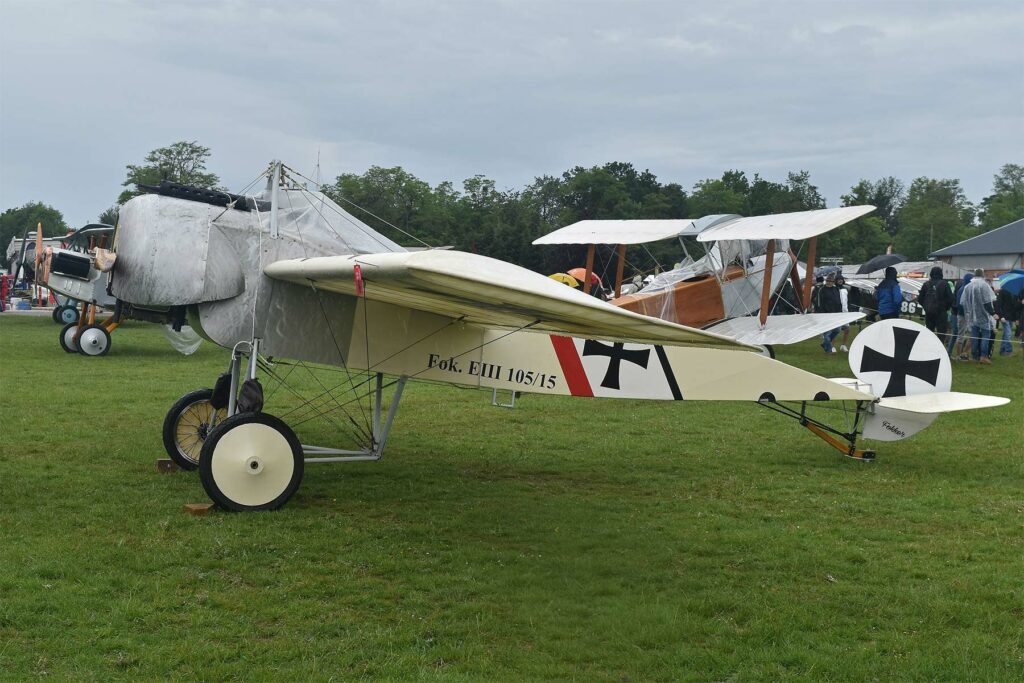Check out the 1915 Fokker E (Eindecker) fighter aircraft – its history, design, performance, and pivotal role in early aviation combat.
This comprehensive article delves into the history, design, performance, and military usage of the Fokker E (Eindecker), a groundbreaking fighter aircraft from 1915 that played a pivotal role in the early days of aerial combat during World War I. The Fokker E (Eindecker) emerged during a transformative period in aviation history, driven by the demands of World War I. This article explores the aircraft’s development, the imperative behind its creation, its launch, and its significance within the historical context. Additionally, we’ll uncover whether the aircraft had a NATO nickname.
History of the Development of the Fokker E (Eindecker)
World War I witnessed rapid advancements in military aviation, and the need for a specialized fighter aircraft was crucial. The Fokker E (Eindecker) program was initiated in response to this demand, with development beginning in 1915.
The aircraft’s design was led by the renowned Dutch aviation pioneer, Anthony Fokker. The Fokker E made its maiden flight in 1915.
Design of the Fokker E (Eindecker)
The Fokker E (Eindecker) was a monoplane fighter aircraft with a distinctive single-wing design. It featured a wingspan of approximately 8.7 meters (28.5 feet) and a length of 6.25 meters (20.5 feet). The aircraft was powered by a 80-horsepower Oberursel U.0 rotary engine.
One of the aircraft’s significant advantages was its synchronized forward-firing machine gun, which allowed the pilot to fire through the propeller arc without striking the blades. This innovation provided a crucial edge in aerial combat.
However, the Fokker E’s drawback lay in its relatively low speed and limited maneuverability compared to later fighter aircraft. Its design also lacked protective armor for the pilot.

Performance of the Fokker E (Eindecker)
The Fokker E (Eindecker) offered respectable performance for its time. Powered by the Oberursel U.0 rotary engine, it achieved a top speed of approximately 130 km/h (81 mph) and had a service ceiling of around 3,000 meters (9,843 feet). Its range was approximately 220 kilometers (137 miles).
In comparison to other fighter aircraft of its era, such as the French Morane-Saulnier L and the British Royal Aircraft Factory F.E.2, the Fokker E proved to be a formidable adversary in combat due to its synchronized machine gun, which was a significant innovation.
Military Use and Combat of the Fokker E (Eindecker)
The Fokker E (Eindecker) became one of the first purpose-built fighter aircraft in history. It saw extensive use by the German air force during World War I and played a pivotal role in air combat over the Western Front.
Equipped with a synchronized forward-firing Parabellum MG14 machine gun, the Fokker E was a deadly opponent for Allied aircraft. It was involved in numerous dogfights and combat operations, often prevailing against its adversaries.
While not widely sold to other countries, the Fokker E (Eindecker) was a game-changer in aviation warfare. As technology advanced, it was gradually replaced by more advanced fighter aircraft.
The Fokker E (Eindecker) was a groundbreaking fighter aircraft that played a pivotal role in the early days of aerial combat during World War I. Its synchronized machine gun innovation set a standard for future fighter aircraft. Though no longer in use, it remains a symbol of innovation and effectiveness during a crucial period in aviation history.
Back to the Warbirds section.